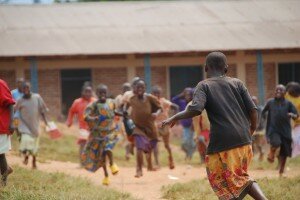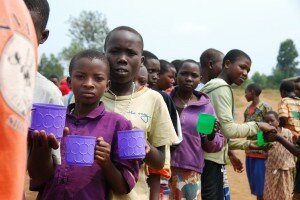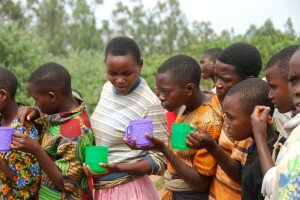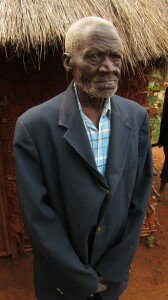Below is the last installment of our four part series featuring award-winning producer Jessica Stuart’s stories from the field:
Friday, June 24th- Citoboke

Guise and Wangechi work at the distribution center
We spent the morning in Bujumbura visiting the country’s drug distribution site. Although it’s a warehouse full of boxes, it’s an exciting place. We see drugs from the World Bank, from UNICEF, from pharma, lined up along walls waiting to be picked up and taken to communities that need them the most. We find rows and rows of Albendezole. This drug is less than a dollar and we’ve already seen what it’s done across Burundi. The room is filled with kindness packed in brown boxes. It’s the kind of place we would want to know is there for our children.

Drug distribution center in Bujumbura
Although time is getting tight, on our last day of filming, we decide to go to a site that has evidence of another NTD, schistosomiasis (also known as Bilharzia or Snail Fever). If there is one thing I’ve learned in my travels to Africa, “Not far” means FAR. If you ask anyone how long it takes to get somewhere, the answer is always “not far”. “Not far” could possibly mean 5 minutes, but it usually means an hour or more.
We ask the ministry representative where it is. The answer, of course, is “not far”. We head North of Bujumbura for over an hour and a half to an area called Citoboke. This is the part of Burundi that separates itself from Eastern Congo by a small river. The feeling is different here. Drier, hotter, and more intense. The road is…. bumpy to say the least’ full of potholes. Not far becomes 30 minutes, an hour, an hour and a half plus a stop at the ministry for protocol.

Boys collecting water in Citoboke, along the Congo Border
Just when I think I can’t hear anything worse about NTDs, Guise tells us about Schisto. Although it has a low mortality rate, its chronic effects are devastating. It damages internal organs, impairs growth in children, and can cause damage in cognitive development. I read that Schisto is second in economic impairment to a country only to Malaria.

snail samples from Citoboke
Schisto comes from fresh water snails. Guise and a guide from the Ministry walk along the Eastern Congo border to a riverbed. Here, the doctor and Guise begin searching for snails. After a few minutes, they begin to find many and collect them for testing. At the same time, several families are at the same location bathing themselves and their children. It appears to be a bathing place for members of the community.

Crew films children bathing in Citoboke
Again, I don’t know what to say or think. The water is a blessing and necessary to life, yet it’s the water that is keeping the population sick. It’s hard to watch kids playing and bathing, knowing they are putting their life at risk. We film and gather crowds, curious what we are doing on the side of a road. It’s hard to explain we are hoping to save lives when they don’t even know their lives are at risk to begin with.
The end.
We returned to our hotel, which felt like the Ritz Carlton after a week of bucket showers.
We sat outside of our hotel, watching hippos graze from Lake Taganika and the lights of Tanzania shimmering on the other side of the water. In the distance Burundian drummers were performing a celebration and the sound wafted our direction. Keith, Kenny, and I toast and think about the next time we will be lucky enough to travel dirt roads, take cold showers, film for 15 hours a day, get covered in dust, and travel to far reaches to tell stories about people who need us the most. We wouldn’t have it any other way.
I think our translator Gerard summed up our trip the best as he got out of the car to say goodbye. He looked at me and said in his very deliberate English “When I started this journey I was just a translator of English. But after this trip, if one more child gets an albendizole pill, or one more person doesn’t have to suffer because of the work this group is doing, I will always know that I, myself, had a very small part in making my country a better place, and that brings me more joy than I have ever known”. Well said Gerard. Well said.
Jessica Stuart is an award winning producer and consultant. Her video work and live productions have been seen around the globe- on television, the web, and in theaters. She has worked for NBC Network News, The Today Show, The Oprah Winfrey Show, ABC Network News, and The Bill and Melinda Gates Foundation. In September 2008, Jessica created Long Story Short Media, an independent creative consulting and producing firm, specializing in short form, multi-use content. She lives in Washington, DC with her husband, David, her son Alexander, and their rescue dog, Riley Martin.











